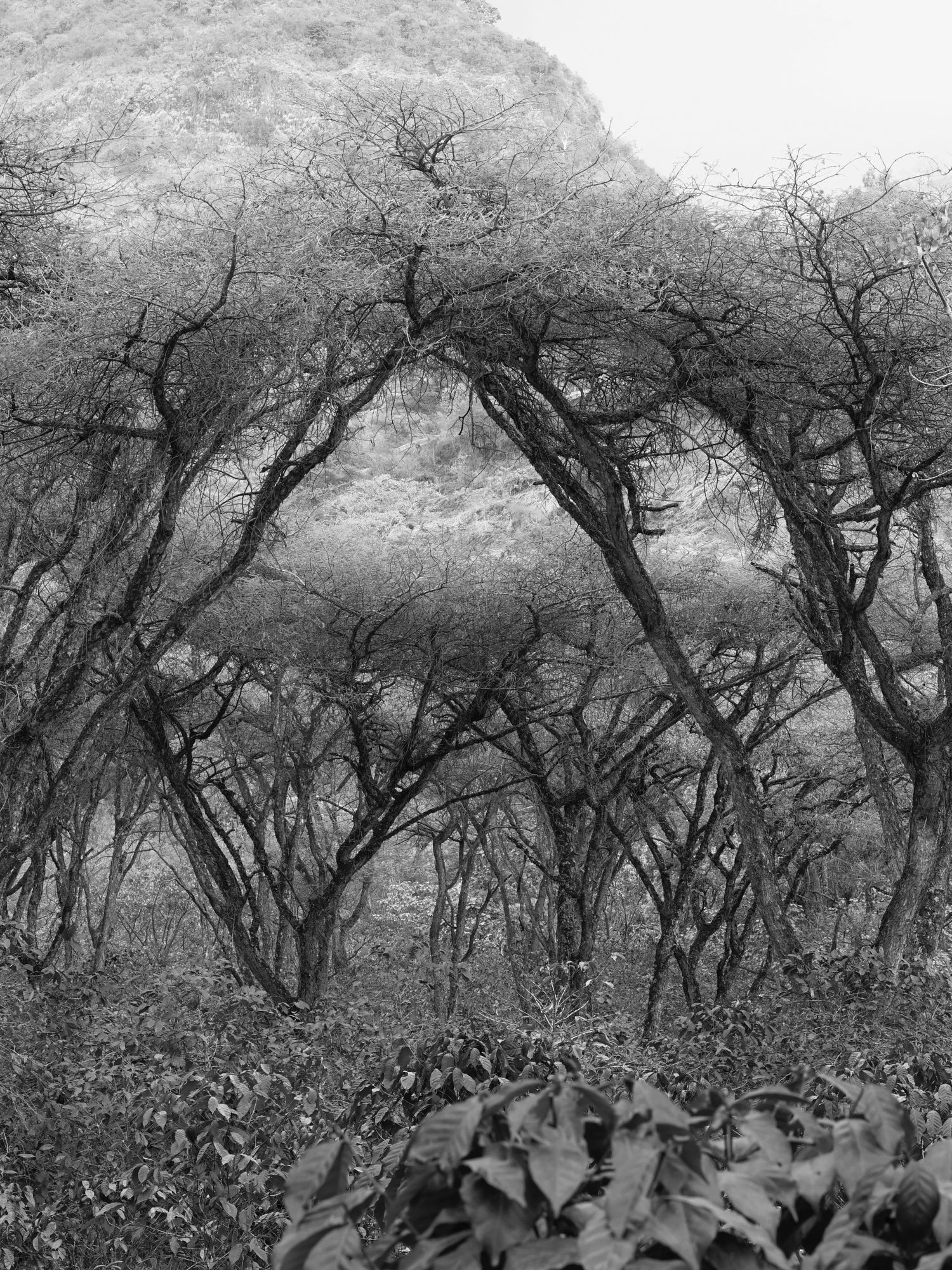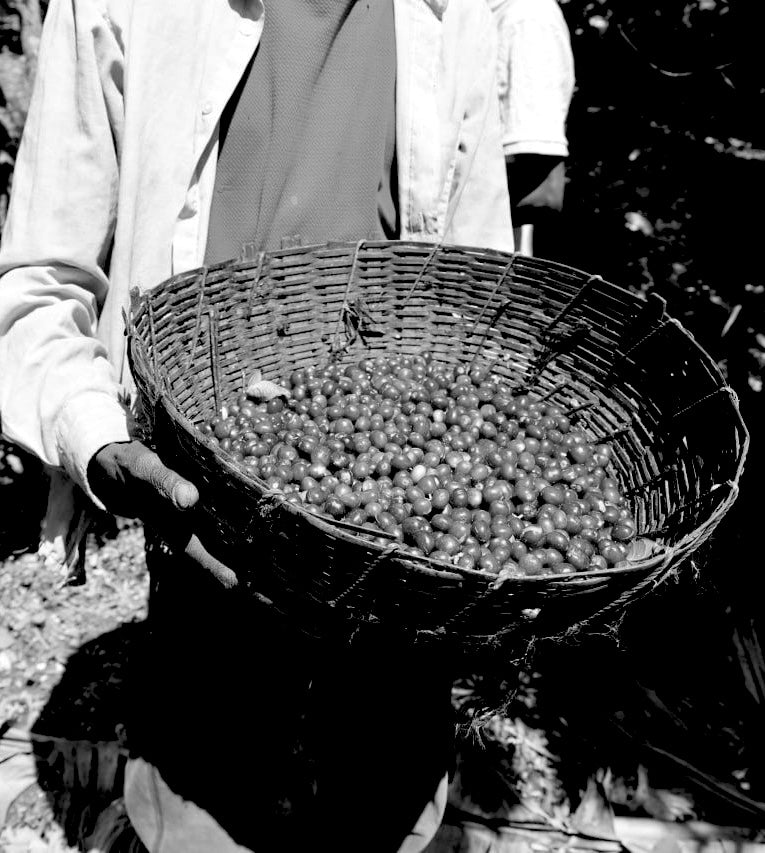Ethiopia - Guji Uraga Washed
A clean and vibrant cup with elegant notes of peach and jasmine complemented by a cotton candy sweetness.
We roast and ship Monday - Friday.
Orders received before 9am typically ship same day.
Couldn't load pickup availability


Technical Information
Producer: Various small-holder producers - Uraga Washing Station
Region: Uraga, Guji Zone, Ethiopia
Harvest: December to February 2025
Varietal(s): Ethiopian Heirloom
Process: Fully Washed
Altitude: 2100-2400 masl
Exporter: Gujoo Exporting
Importer: Emba Coffee Imports
Agrton Gourmet Color: 108 (light)

Coffee Story
Guji is a remote and storied zone in Ethiopia’s southern Oromia Region, home to the Oromo people—who speak their own distinct language, setting them culturally apart from the Amharic-speaking north. Each woreda (district) in Guji has its own rhythm, traditions, and approach to coffee cultivation, contributing to the remarkable diversity that defines Ethiopian coffee.
As demand grows for more refined processing, small washing stations are springing up across Guji. These new hubs are helping unlock the full spectrum of the region’s coffee potential—floral, vibrant, and complex.
The Uraga Washing Station, one of many small washing stations springing up across Guji, is nestled in the high-altitude forests, where elevation, climate, and heirloom varieties come together to produce highly expressive coffees. With altitudes ranging from 2,150 to 2,400 masl, the region is renowned for its slow cherry maturation, which results in dense beans and a crisp, clean cup profile.
The Ganale Dorya River flows through the land, a vital source of fresh water and a natural border between Guji and neighboring Bale. This particular coffee is fully washed at a central station, where meticulous care is given to every step of the process.

Farmers hand-deliver ripe cherries, which are floated to remove any defective or underripe fruit. The selected cherries are pulped, then fermented for 36–48 hours, allowing the sugars and mucilage to break down gently, influenced by ambient temperatures. Next, the beans are washed in clean water channels that also help grade their density, before being laid out to dry on raised African beds.
Over 12–15 days, the coffee slowly dries under the sun. Workers carefully rake the parchment by hand throughout the day to ensure even drying, and protect it with covers during the hottest hours and overnight to shield it from rain and excess moisture.
The result is a clean, expressive coffee that captures not just the landscape, but the spirit and care of the people who bring it to life.
Collapsible content
Varietal
While Ethiopia has identified thousands of distinct coffee varieties—some estimates suggest over 10,000—they’re most commonly grouped under broad labels like Heirloom or Landrace. But these terms barely scratch the surface of what makes Ethiopian coffee so extraordinary.
Coffee is native to Ethiopia, and much of what’s grown here isn’t the result of breeding or lab-driven hybrids. Instead, these are naturally occurring Arabica varietals—wild strains that have evolved and cross-pollinated for centuries in their original environment. Grown by smallholder farmers across diverse microclimates, these coffees are the purest expression of place and plant. They offer a genetic and sensory diversity that’s unmatched anywhere else in the world.
In every cup, you're tasting a lineage that’s remained largely untouched—coffee as it has always been, shaped only by nature and time.
Processing
Coffee processing in Ethiopia is refreshingly straightforward—and intentionally so. When working with world-class genetics and unmatched terroir, the goal isn’t to manipulate the coffee, but to let its natural beauty shine through. A heavy-handed approach would only get in the way.
It all begins when ripe cherries are delivered to the washing station. They’re immediately sorted and floated to separate the good from the bad—low-density, damaged, or underripe cherries are removed and rerouted to commodity-grade lots, while only the ripest, most vibrant fruit continues on.
Next comes depulping, followed by a two-stage fermentation process. First, the coffee undergoes dry mass fermentation in tanks for 18–24 hours. Then, clean water is added for an additional 18–24 hours of wet fermentation. This method boosts clarity and structure in the cup. After fermentation, the coffee is washed through grading channels that perform another round of density sorting, ensuring only the best beans remain.
Drying takes place on raised beds under the sun. To avoid overheating and preserve the integrity of the seed, the coffee is dried in the gentler morning and afternoon hours, then covered or moved to shaded areas during the midday heat. Parchment is turned constantly by hand to promote even drying and to catch any remaining defects.
From floatation to fermentation to drying, each step is deliberate—designed to protect and elevate the coffee’s natural brilliance. The result is a clean, expressive cup with brightness, clarity, and energy.
Once the coffee is fully dried, it rests before being sent to the dry mill for final sorting, milling, and export.
Terroir
As the birthplace of coffee—and the only place on earth where it grows wild—Ethiopia holds a uniquely sacred place in the world of coffee. For anyone involved in growing, roasting, or simply enjoying a great cup, it’s hard not to feel a deep connection to this land.
In Ethiopia, coffee still grows in its natural, wild state within lush forest ecosystems, where indigenous communities harvest it using traditional, cooperative methods. Beyond the forests, countless smallholder farms stretch across the coffee belt, joined by a handful of larger estates. Across this wide range of production styles, world-class coffees seem to emerge effortlessly from the ground.
Of course, great coffee never happens by accident. Even in Ethiopia, exceptional quality takes real dedication. But when you're working with native heirloom varietals—genetically diverse, uncultivated, and perfectly adapted to their environment—and combining them with the unmatched terroir of coffee’s ancestral home, you’re already starting with a remarkable advantage.
It’s no wonder Ethiopia continues to produce some of the most expressive, complex, and beloved coffees in the world.
